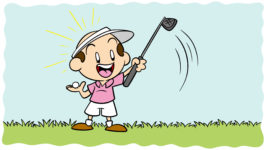If writers share a single fear, it’s the Bibliotrice; a vast, word-eating chicken-monster that consumes nearly finished books with a ceaseless, demonic hunger. If they share a second fear, it’s having their work stolen.
Rare occurrence though it is, plagiarism of this type can happen, and it makes sense to know what you should do in the immediate aftermath of having your work stolen. As ever, our articles are researched to a high standard, but we’re not lawyers and what follows is a general primer, not legal advice.
What you need to know
I’ll move onto step-by-step advice in a minute, but first there are three key things that should inform how you understand the information to come.
Key fact #1 – You’re already protected
Copyright protects you from unauthorized replication or use of your original creative work, and it’s yours as soon as a work exists. It’s free, it’s instant, and you don’t have to do anything to get it. Having created your work, you already ‘own’ it.
In the event that you pursue legal action for copyright infringement, you’ll have to register your copyrighted material, but this doesn’t need to be done in advance.
You automatically have copyright protection for the work you create.Click To TweetSince you have copyright, other people need permission from you to disseminate your work. If they don’t have it, they’re almost certainly infringing on your copyright. There are a few provisions for ‘fair use’ and parody (which you can read more about here), but these only apply under strict conditions, and are a rare concern for most authors.
Key fact #2 – You can’t steal an idea
While the words on the page and specific terminology can be protected, there’s no legal way to stop someone stealing your ideas. This is a worry for many authors who have worked on a project with a partner, but the truth is that it’s unlikely to become a significant problem.
There are no new ideas under the sun, and any author’s take on an idea is going to be shaped by their personal voice and preferences. The proliferation of fairy tales shows how many different takes there can be on a core idea, and how multiple tellings don’t necessarily discourage readers. We’re all writing adaptations in one way or another. Not only that, but…
Key fact #3 – It probably won’t happen
Worrying about plagiarism is a huge time-sink for authors – one of the quasi-fantasies that eats up time and subtly plays to the ego – but actual incidents don’t justify the time spent worrying about it.
There are a whole host of reasons for this. First among them is how much effort it takes to plagiarize someone’s work on a relevant scale. Online plagiarism is generally easy to prove, harshly enforced, and offers very little reward. Most authors will never even finish writing up their original idea, despite the personal relevance and genuine passion they have for the project. Take away that drive and determination and there isn’t much left to motivate someone to pass your work off as their own. Likewise anyone who’s heard your idea or worked on a project with you – authors imagine rogue plagiarists looking around for a project to steal, rewrite and publish, but this mythical beast won’t be blowing down your door anytime soon.
One notable exception to this rule is in particularly short writing, such as that seen on Twitter, where it’s much easier for thieves to take your work and present it as their own. Even here, such thieves tend to take a little from many different people to avoid getting caught. Even when someone steals from an article or blog, it’s generally because they couldn’t find a better way to word their paragraph, and the actual text stolen should be minimal.
In cases like this, it’s often best to simply write the theft off as an unfortunate cost of doing business. The injustice may sting, but the actual loss you’ve incurred is unlikely to justify the time and resources of pursuing reparation. Beyond some of the simple steps below, and especially when it comes to the ultra-short prose on sites such as Twitter, it’s unlikely to be worth your time.
In Rob Delaney: Mother. Wife. Sister. Human. Warrior. Falcon. Yardstick. Turban. Cabbage., author Rob Delaney reflects on his own experience of stolen work.
I had also cultivated a somewhat relaxed philosophy about my own intellectual property. Some years before, I’d had the good fortune to have a joke stolen from me and performed on TV by a comic I knew. I was upset at first, but then I realized that – poor etiquette aside – the guy was funny and he would’ve been on TV with or without my joke. I also realized that if I couldn’t immediately write several more jokes to replace it, then I wasn’t funny, and I had no business calling myself a comedian. So I forced myself to make a mental adjustment and I decided the guy had done me a giant favor… My silent motto when people started stealing my jokes on Twitter was, “Go ahead and take ’em, motherfucker. Here come five more.”
– Rob Delaney, Rob Delaney: Mother. Wife. Sister. Human. Warrior. Falcon. Yardstick. Turban. Cabbage.
Of course, that only applies to snippets of work – if someone has stolen a larger work, or repeatedly targets you for minor theft, there’s no doubt that you need to be active in forcing them to stop. Here, then, is exactly how to do so.
Step 1: Contact the thief
You might not feel like getting in touch with someone who steals work, but it can be the easiest and least stressful way to get them to remove copyrighted material. This is especially the case if multiple people are involved; if, for example, they had an editor or fellow writers who weren’t party to the theft and wouldn’t want to be affected by it.
Most online content thieves are taking the chance that no-one will notice their theft and, having been caught out, will gladly remove the offending material rather than face further trouble.
Of course, that doesn’t mean you have to wait around for them, and you should feel free to move directly from step 1 to step 2 without waiting around for a response.
Step 2: File a DMCA takedown notice
A DMCA (Digital Millennium Copyright Act) takedown notice is a way of telling a company that they’re hosting copyright-infringing work. This takes the complaint over the thief’s head to their ISP (internet service provider). ISPs have the ability to restrict offending content and are subject to huge fines if they refuse to do so, so they’re motivated and able to help.
A DMCA takedown notice is a simple way to protect stolen work.Click To TweetThis may sound complicated, but it isn’t. There are companies who offer to do this for you, but you’re highly unlikely to need their help, and filing a takedown notice shouldn’t cost you any money. It’s not some special service; just a regular part of US Copyright Law for which there’s no inherent charge. Here’s how it works:
- Some hosting services – especially those that host blogs – will make things incredibly easy by allowing you to select DMCA or copyright complaints from a dropdown menu or via their support features. If this is the case, simply follow their instructions.
- If that isn’t an option, use a free service such as whois.domaintools.com or whois.net to find out the ISP of the website that has stolen your work.
- Go to the home website of the ISP and find their ‘DMCA’ section (you can do this quickly by searching for the term). Remember that you’re looking for the homepage of the ISP, not the homepage of the site that stole your work. The DMCA section will include the correct form for filing your takedown notice.
- Fill out the form as instructed. You’ll need to provide your name and contact details, and a legally binding confirmation that you genuinely believe the material in questions infringes your copyright and intellectual property. To make things easier, make sure you’re able to link to where the stolen work is displayed (the page itself, not just the site), and your own original work. You’ll also be asked for a summary of the work. Make things as easy as possible for the person who reads the form – be clear, succinct, and provide links to everywhere they’ll need to check.
Once the form has been completed, you should receive some form of automated response. The ISP will then temporarily suspend the link to the allegedly infringing material. It will no longer be visible, but it does still ‘exist’ in the same space.
This will be the case for a few days, during which the site owner has the chance to contest your takedown notice. If they fail to do so, or agree that the content should be removed, the ISP will permanently remove the link, and your work will be removed from their site.
Most writers will find that this is the end of their troubles – ISPs have absolutely no desire to support stolen work, and thieves tend to see little value in fighting for something they didn’t produce in the first place.
If, however, they choose to fight the takedown, things get more serious.
Step 3: Seek legal representation
At this point, a legal professional will have to look over your case and see if you have the grounds to proceed. You’ll also have to register your copyright with the US Copyright Office, but again, you can do this at any time, and don’t have to have registered in advance or prepared your work in a certain way.
General, all-purpose advice doesn’t cut it from this point on, but you’re also not diving into a legal quagmire. Legal consultation isn’t binding, and you’ll be able to explore your options and chances before committing to a larger legal action.
Where they do exist and operate, plagiarists depend on fear and confusion to get away with theft. Remember at all times that it’s surprisingly easy to protect your work – if anything, the system is weighted in favor of those issuing takedown notices. A problem in some areas, but a huge relief for authors looking to protect their work.
Precautions against theft
As I said before, you already have the copyright for your work, and you don’t have to claim or activate it in any way. That said, adding a copyright notice to your site could deter casual thieves who want to prey on the uninformed.
A copyright notice has four key features:
- The copyright symbol – This can appear in various forms, but the classic © is the simplest and most recognizable.
- The year of publication – Quite simply, when a work was published. For an ongoing work, like a blog, you can indicate a range, e.g. 2007—2017.
- The name of the copyright holder – The name by which you represent yourself: your own name, your site’s name, a pseudonym, etc.
- A rights statement – There are various types of rights you can claim over a work, but the default is simply ‘All Rights Reserved’. This means you retain all the original rights given to you by your automatic copyright.
The final product would look something like the below.
© 2017 Robert Wood All Rights Reserved
You can easily add this kind of copyright notice to your site’s footer, informing any wandering plagiarists that you know what you’re doing, and they should go look for spoils elsewhere. While this isn’t a necessary protection, it’s an easy way to deter theft and shut down anyone who claims they thought it was fine to copy your work. For more extensive instruction on how to implement a copyright notice on your site, check out this article.
A copyright notice can deter potential thieves. Click To TweetAnother important precaution is simply to know and be confident in your rights. Crediting you as the original creator doesn’t give someone the right to disseminate your work without permission. In pretty much every case you’ll encounter, the other party needs permission to share your work. Be confident and don’t be afraid to exercise your rights.
Finally, it can help to be aware of some danger signs. Unexplained spikes in traffic can indicate plagiarism, especially if there’s no other reason that a particular piece of work is gaining attention – it may be that someone has ‘credited’ you in a newly published piece. Likewise, pingbacks in your site comments may indicate a theft. Pingbacks are automatic notifications sent when someone creates a link to your content from an external site; another sign that you’re being ‘credited’ without your permission.
As I said in the beginning, though, don’t worry too much about whether someone is going to steal your work. The writer who spends time scouring their traffic and inspecting their pingbacks for signs of skullduggery is generally wasting their time. It’s enough to simply recognize these signs when they appear.
Stolen but not lost
As is hopefully apparent, writers are in a relatively good position to protect themselves if their work is stolen online. The biggest obstacle to this has always been the assumption that it’s too difficult or too risky to seek proper protection. That isn’t the case – with just a couple of searches and a form, you can exercise your rights and cut any would-be plagiarists down to size.
It’s easier to protect your work than you might think. Click To TweetAs a final note, remember that for many people, this is a confusing area. If you see your work reproduced elsewhere, it’s more likely to be someone who thinks adding ‘no infringement intended’ to the bottom is all they have to do. They’re wrong, of course, but all it’ll take to set them straight is a quick message making it clear where you stand. And if that doesn’t work quickly enough, well… I guess a ‘Digital Millennium Copyright Act takedown notice’ might sound a little scary after all, when it’s aimed at you.
For more information on copyright and all it entails, check out Your 5-Minute Guide To Copyright, Piracy And Plagiarism and Should You Stop Your Fans Writing Fan Fiction? Or, if you want to share your own copyright success story, be sure to leave a comment below.






1 thought on “What To Do If A Website Has Stolen Your Work”
A book I. Self published at Amazon’s Create Space has been stolen and I can’t get any more copies. A circus of liars in India led me on a merry chase of “do this then do that” and when they wanted my bank account number i hung up.
I find no recourse and would appraise advice if any is available through this forum.